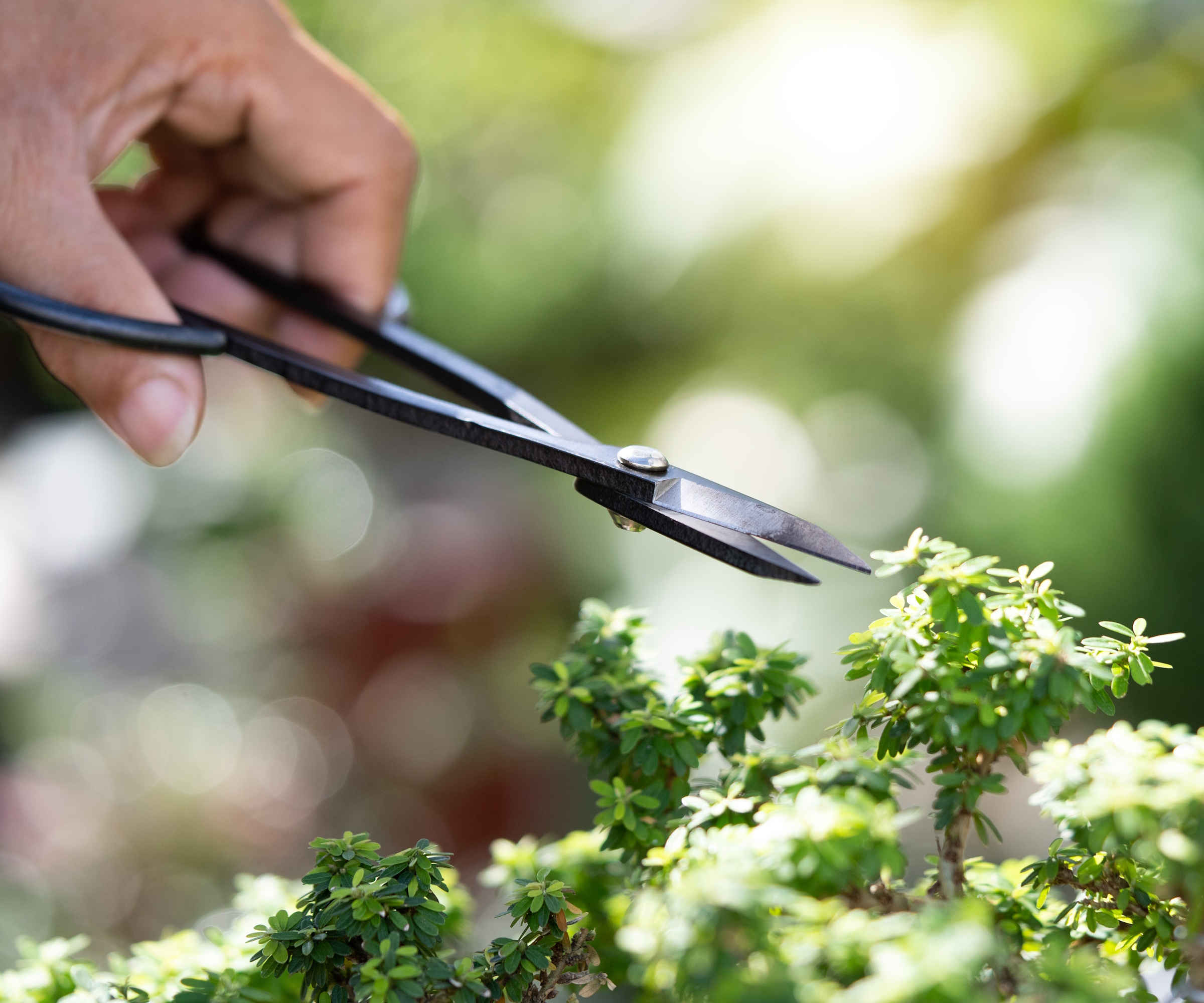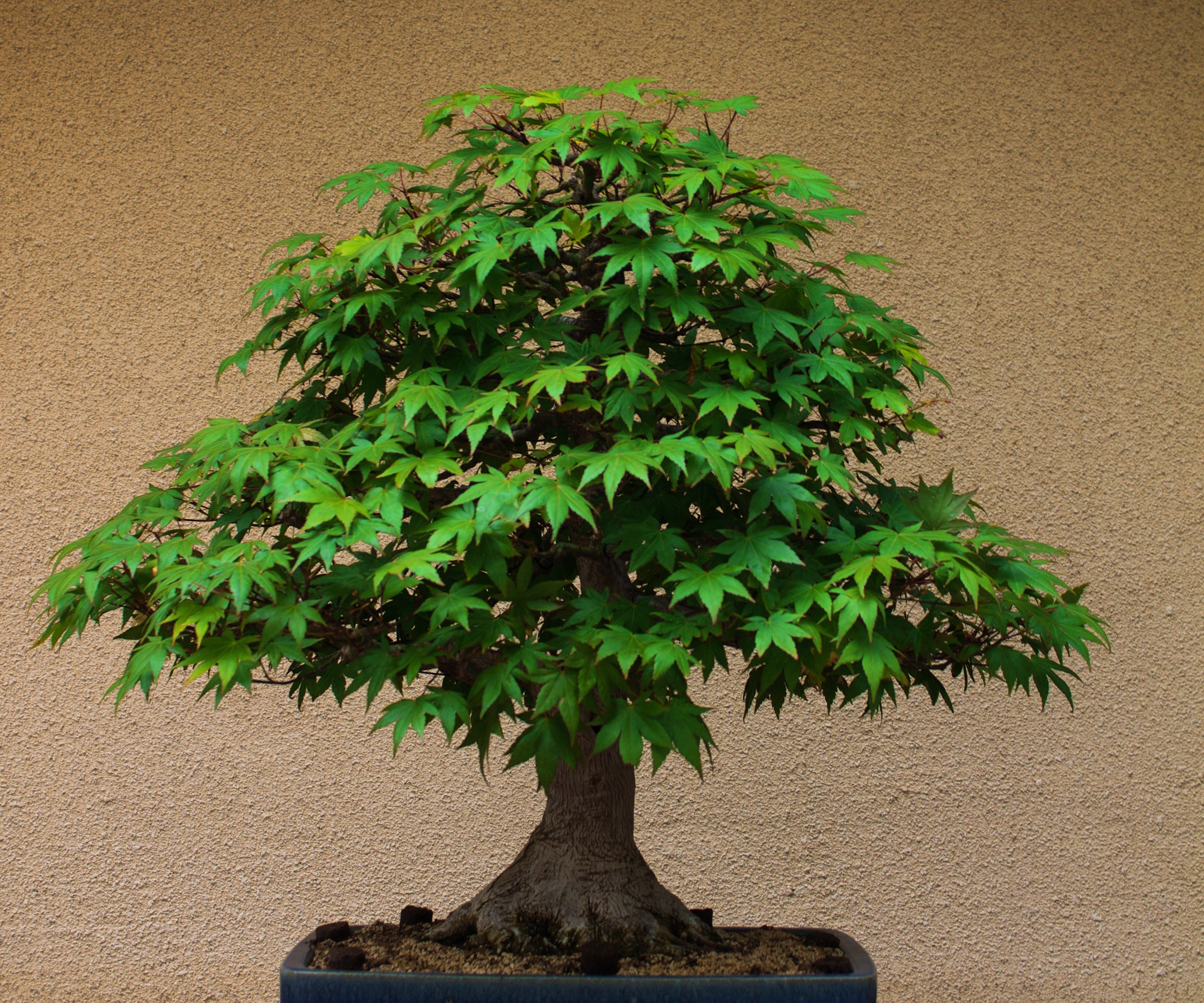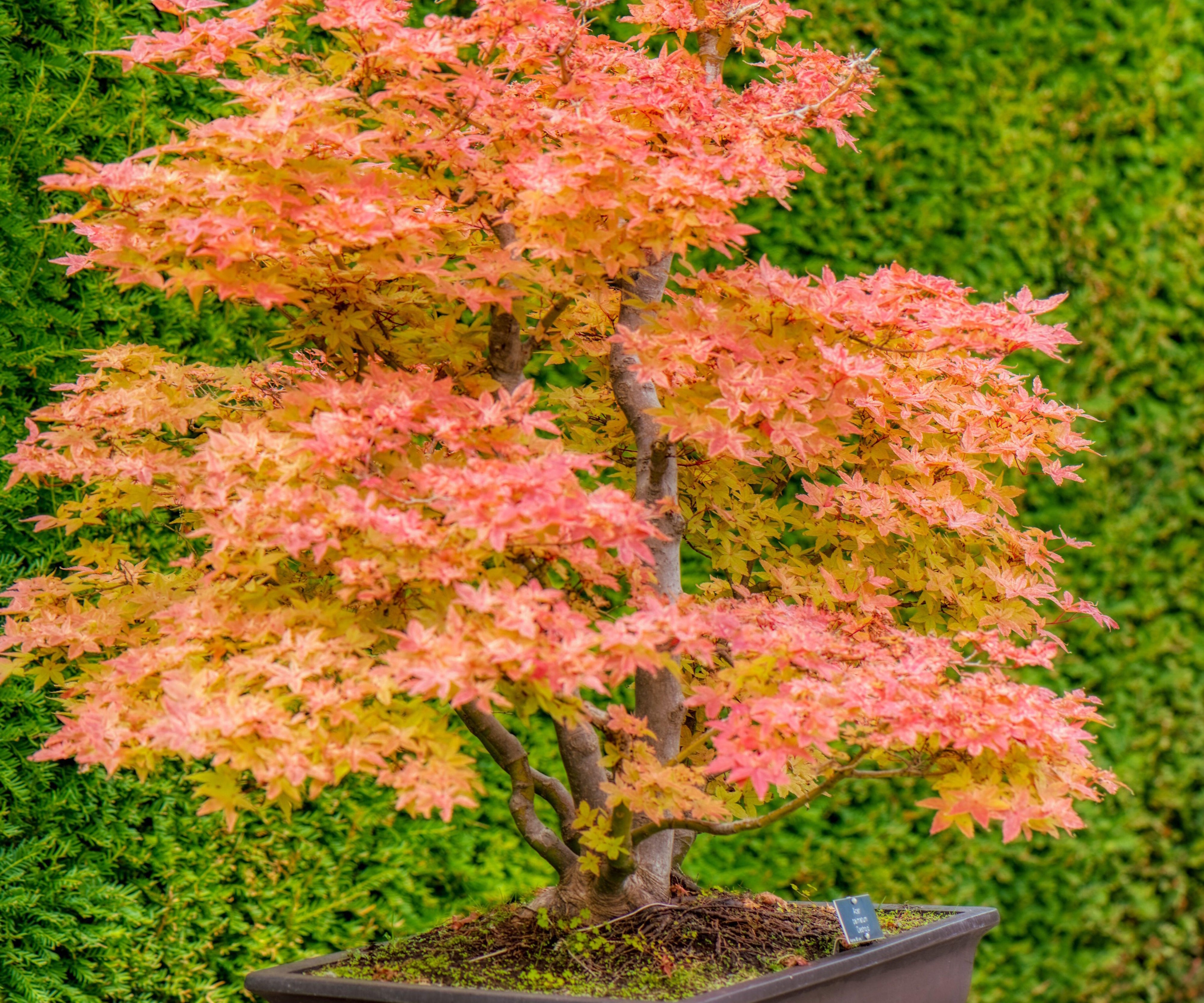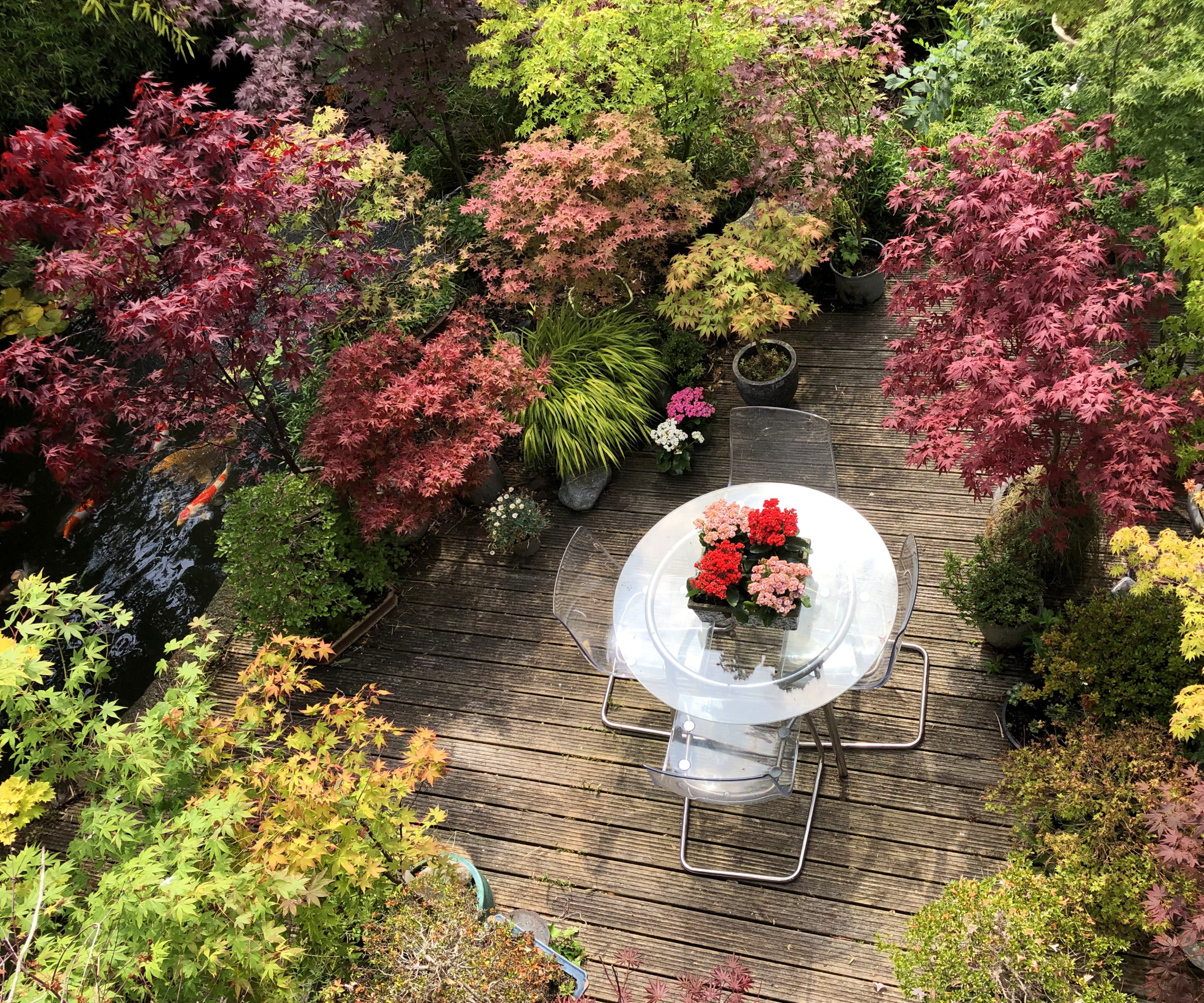
Grown in gardens worldwide, Acer palmatum is a species famed for its dramatic leaf displays in fall. One Japanese maple variety, Acer palmatum 'Bloodgood', for example, undergoes a dramatic transformation, with deep purple leaves turning a fluorescent pinkish-red in October and November - quite a spectacle to behold.
Japanese maples have long been grown as bonsai trees, chosen not only for their spectacular seasonality but also due to their ease of care. Japanese maples are ideal for bonsai beginners, happily settling into small pots and responding well to pruning and shaping, quickly developing a canopy full of attractive palm-shaped leaves.
What's more, growing in miniature encourages a more mindful and meditative approach to gardening that forces you to slow down, which I think most of us could benefit from. So, why not consider growing Japanese maple trees in bonsai form? Whether you have a small terrace or an expansive backyard, growing bonsai trees is a rewarding endeavor that might just become your new obsession.

How to grow Japanese maple bonsai trees
Learning how to care for a bonsai tree is more complicated and fiddly than traditional shrub or tree care. However, while many shy away from this miniature art form for fear of it being overly complex, by following a few tried and tested rules that have been practiced in China and Japan for thousands of years, you will enjoy remarkable results. What's more, of all the different bonsai tree types, Japanese maples are a great species to grow if you are new to this craft.
How to get started with Japanese maple bonsai trees

When considering how to grow Japanese maples in pots, these striking trees do best in US hardiness zone 5 to US hardiness zone 8, tolerating winter freezes down to -20°F/-29°C.
'Japanese maples are woodland plants, preferring dappled shade such as you might find at the edge of a forest,' says Terry Huang, plant expert and Director of Living Collections at South Coast Botanic Garden in the Los Angeles area. 'In general, they do not do well in exposed situations, preferring morning sun and afternoon shade, or dappled light throughout the day.'
These rules, as Terry helpfully outlines, also apply to bonsai forms of Japanese maple trees. 'Full sun situations, or climates that are hot and dry, are not ideal for these plants,' Terry adds. Sunny patios or balconies, therefore, are not recommended for bonsai trees, instead, opting for a sheltered but partially shaded location will produce the best results.
Before planting, you need to source a suitable, pan-like bonsai planter with a drainage hole. This is important, as Japanese maple plants do not like having waterlogged soils. Bonsai ceramic pots are available from Amazon. It is best to start small, in a planter that is suitable for the size of your Japanese maple. Gradually, in years to come, you can replant your maple into pots of bigger sizes as it grows.
In terms of soil, using a bonsai mix is recommended, as these products have been specifically formulated, with plenty of drainage in the form of horticultural grit.
This blue bonsai pot is aesthetically pleasing and practical, ensuring that your bonsai specimens remain in perfect health while also looking good.
This soil blend is specifically formulated for bonsai trees, ensuring that drainage is optimal for your miniature trees while also providing plenty of nutrients.
This ceramic two-tone bonsai planter is durable, sure to last many years in your yard. With an attractive design, this pot will look spectacular on a patio table.
Japanese maple varieties to consider

There are many different Japanese maple varieties, but it is best to select a dwarf variety with small leaves for optimal results. One option, seen in the image above, is Acer palmatum 'Deshojo', which produces dramatic orange-red foliage. Acer palmatum 'Deshojo' live bonsai plants are available to order from Walmart.
Alternatively, Acer palmatum ‘Katsura’ is another dwarf specimen that has attractive yellow leaves with an unusual crimson border. Suitable for US hardiness zone 6 plus, this variety would look particularly good in a colorful planter. Acer palmatum ‘Katsura’ starter plants are available from Amazon, and can be easily pruned and trained to create a bonsai form.
Finally, if you are a fan of the classic plum-purple maple coloring, Acer palmatum 'Crimson Queen' is one option to consider. With a weeping form, this variety makes for a striking bonsai tree, with dark foliage that turns bright red in the fall. Acer palmatum 'Crimson Queen' live bonsai plants are available from Walmart.
This bonsai tree starter kit includes everything you need for successful miniature gardening, including seeds, soil, pots and scissors.
Ongoing care for Japanese maple bonsai trees

Unless you have bought an older, trained bonsai specimen, you will need to use small canes and bonsai wire to shape your tree as it grows. Bonsai wire is available from Walmart. Young green stems will be flexible and easy to bend and tie in, making it relatively simple to create a canopy-like structure.
The aim is to craft a bonsai tree that is a miniature form of a Japanese maple growing at normal size. Over time the leader stem/s or trunk will thicken and be able to support the canopy without any need for canes.
Pruning, shaping and tying in stems can take place across the growing season, so adding these jobs to your spring gardening checklist and summer gardening checklist is important. Little and often is the best approach when training bonsai trees, as they can quickly lose their shape and appear messy if neglected.
In terms of how to water plants, be sure to water your Japanese maple bonsai trees during the spring and summer, as these pots will frequently dry out during the warmer months of the year. One trick of the trade is to submerge your bonsai planter in a bucket of water, allowing the soil to soak for 15 minutes at least once a week. Be sure that the water can then drain away and that the drainage hole is not obstructed.
Finally, it is important to learn how to learn how to fertilize Japanese maples, which is vital for bonsai specimens in small pots. Bonsai fertilizer is available to order from Walmart. Throughout spring and summer, feed your Japanese maple tree once a week, decreasing to every other week in the fall. You do not need to feed your bonsai trees during the cold winter months.
FAQs
Can I grow Japanese maple bonsai trees indoors?
No, it is not advisable to grow Japanese maple bonsai trees indoors. Acer palmatum need cold weather in the fall and winter to go dormant, which is a necessary part of their annual life cycle. Central heating in the home can confuse the plant, and high humidity can cause pest and disease problems for your bonsai tree.
How do you winterize Japanese maple bonsai trees?
In general, you do not need to winterize Japanese maples, as this species is remarkably hardy. However, if you reside in US hardiness zone 5 or below, where winter temperatures can drop below -15°F, you should take precautionary steps. Move your bonsai tree to a sheltered corner near your home, where it will be protected from strong winds. I would also suggest wrapping the base of the pot in burlap, available from Walmart, which will prevent damage to the roots during periods of frost and snow.
Younger Japanese maple bonsai trees can benefit from annual repotting, helping to encourage the plant to grow with more space and refreshed soil. As your bonsai tree ages, repotting can be reduced. For trees older than 10 years, repotting every three or four years should suffice. Bonsai repotting can be slightly more complicated than for regular potted plants and may require another pair of hands. Work slowly and carefully when lifting the plant to avoid snapping or damaging the roots.
For more inspiration, see our guide to bougainvillea bonsai trees, to add some tropical blooms to your miniature, meditative plant collection.







